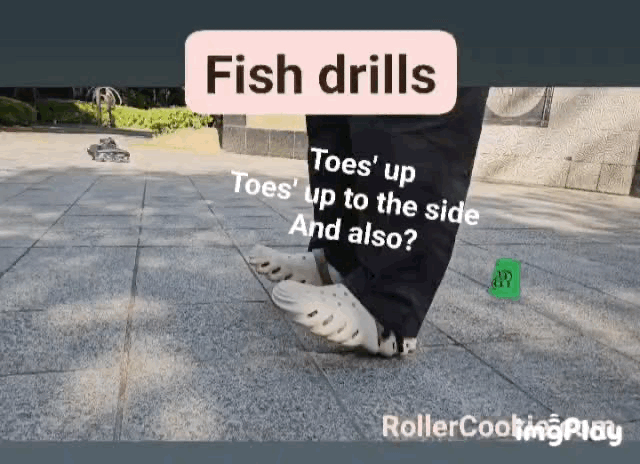Fish: Mastering Slalom Maneuvers
This article dives into the world of slalom skating, exploring the technique of the "Fish" and how it compares to the "parallel turn," a fundamental skill for general skating. While the Fish is all about agility in slalom, the parallel turn provides a smooth turning technique for recreational skating or navigating obstacles. No doubt both involve turning, they serve distinct purposes on the skating rink or at West Coast Park.
1. Parallel Turn: A Versatile Turning Technique
The parallel turn is a foundational turning skill in skating, not specific to slalom. It allows for smooth, controlled turns, making it ideal for general skating or maneuvering around obstacles. Imagine a pair of scissors – that's the basic stance. Your feet tilt slightly inwards or outwards depending on the turn. Your edges correspond to the turning direction, and your body leans inwards or outwards for stability. Most of your weight (around 70%) rests on the front leg, guiding the turn.
2. The Fish: Zigzagging with Finesse
The Fish, on the other hand, belongs to the realm of slalom skills. It's a series of quick, short turns designed to navigate between closely spaced cones. Unlike the parallel turn, the Fish involves a zigzag motion between cones placed upright. Here's what sets it apart:
- Stance and Edge: The Fish employs a "number 11" stance. Imagine your feet like train tracks! While a parallel turn uses more corresponding edges; angled outwards & inwards, Fish uses your center edge for maneuverability, lesser corresponding edge..
- Footwork: The key to the Fish lies in heel pivoting. Imagine your feet as hinges, with the movement originating from your heels.
- Weight Distribution: Unlike the parallel turn, the Fish requires you to keep your weight on your heels throughout the maneuver.
2-1 Mastering the Fish: Key Techniques
Conquering the Fish requires mastering three key elements:
- Toe Up: Shift your weight to your heels, then lift your toes.
- Toe Up to the Side: Maintain your heel pivot and gently swing your foot sideways, creating the zigzag motion. Focus on keeping your ankles low and initiating the movement from your heels.
- Wiper: Keep your toes down. To refine the movement, perform a subtle ankle wiggle from side to side. Imagine you're trying to squeeze through a narrow gap while keeping your feet pointed forward.
3. Key Difference:
The main difference lies in the edge used:
Parallel Turn: Uses corresponding edges (inner/outer) for carving smooth turns.
Fish: Utilizes the center edge for quick changes in direction during slalom.
So, the next time you hit the rink, remember:
Parallel Turn: Master those smooth, graceful curves.
Fish: Become a speedy dodger and navigate cones like a champ!
Once you feel comfortable with these techniques, set up some cones and put your Fish skills to the test! With dedication and practice, you'll be navigating those cones like a pro. Keep rolling!
Happy Skating!
Watch the video_Fish drills 👈🏼 📽️
coach Moon, RCC

























